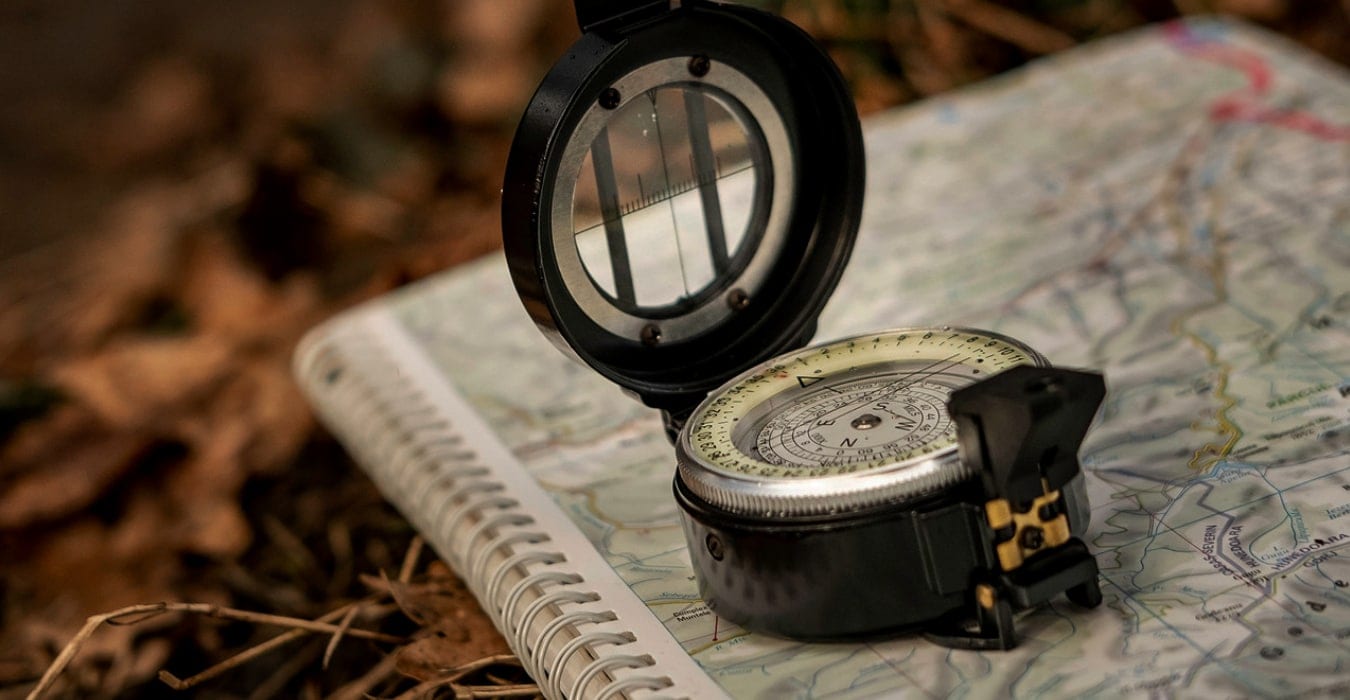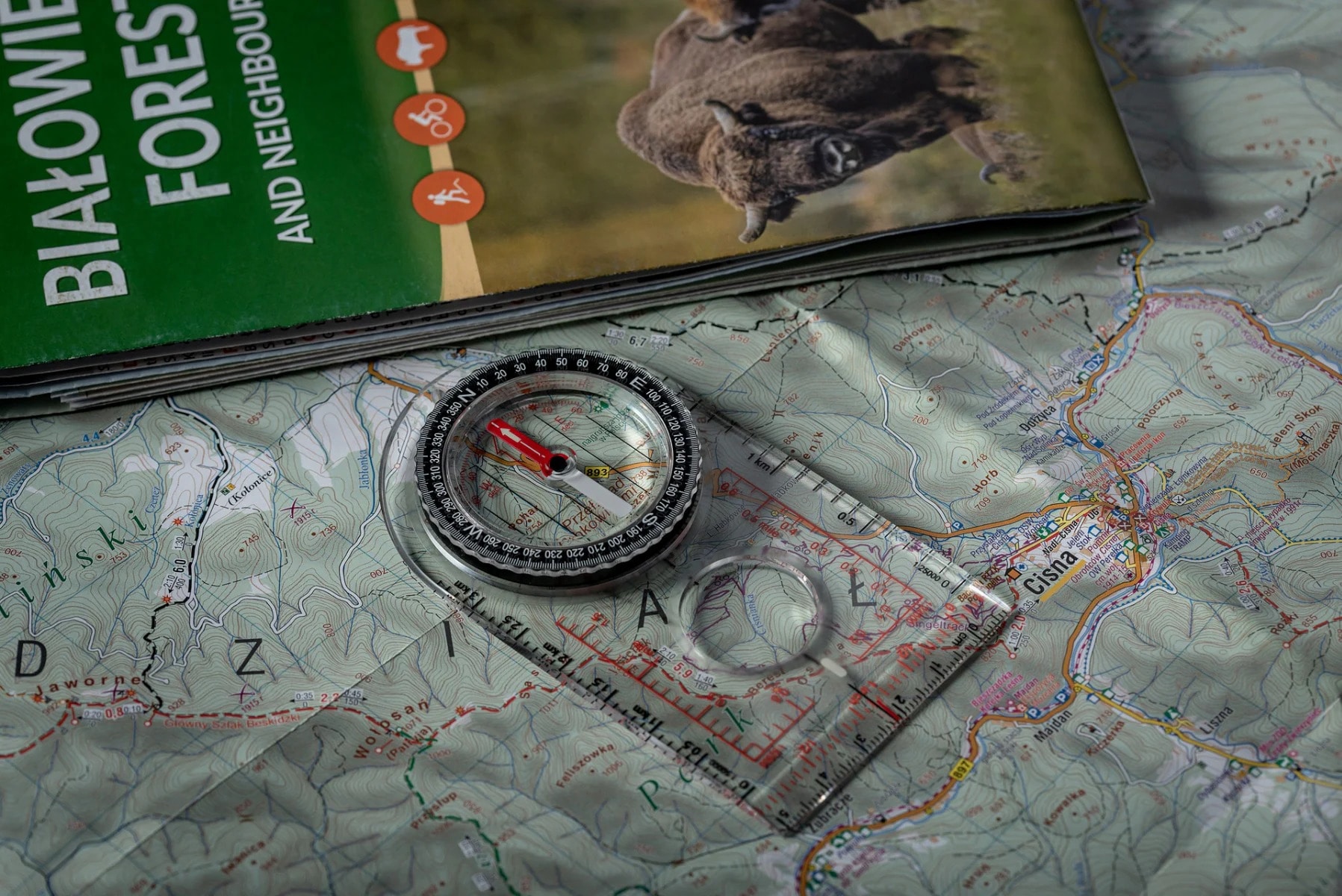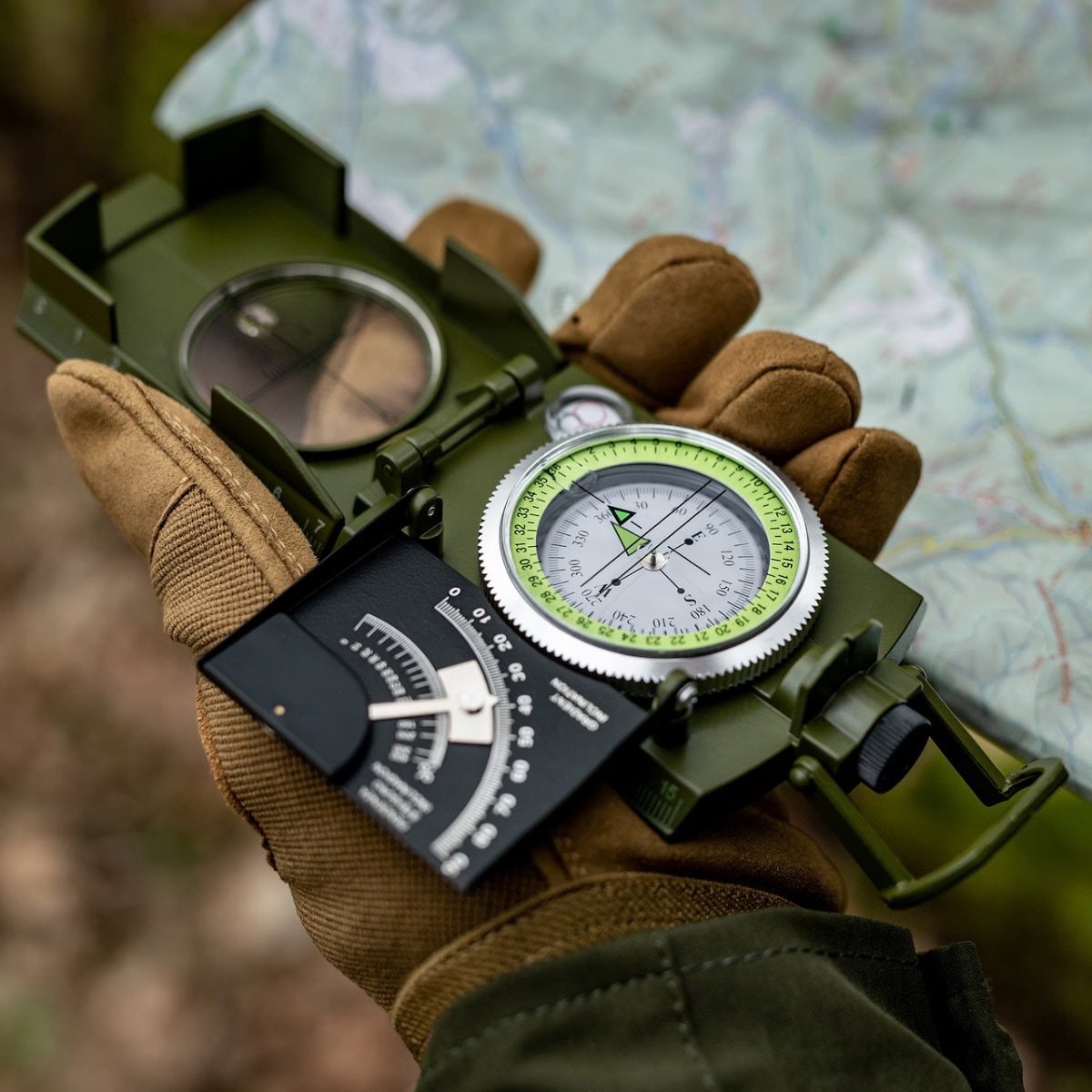Prismatic compass vs. compass - what's the real difference?

The prismatic compass and the compass are navigation instruments used in the field, for example, during mountain expeditions or survival activities. They are also useful in crisis situations, such as natural disasters or power outages. Many people use the terms "compass" and "prismatic compass" interchangeably, but this is a mistake because they are two different devices. The fact is that both are used to determine direction and properly orient maps, but the prismatic compass also has additional functions. In this article, you will learn what a compass and a prismatic compass are, as well as their applications. We will also point out the key differences between these two instruments.
What is a compass and what is it used for?
A compass is a device used to indicate the cardinal directions. It allows for precise map orientation and determining the optimal route to a destination. It was most likely used in China as early as the 11th century or even earlier, although not in the form we know today. Initially, it was a water-filled vessel in which a piece of wood with an attached magnetized plate floated, pointing in the north-south direction.
Today, there are many types of compasses that use different methods and technologies to determine direction. However, the most traditional and common type remains the magnetic compass, which operates based on the phenomenon of Earth's magnetism. This instrument allows for determining the cardinal directions (north, south, east, west) using a magnetic needle, which has two poles: north and south.
Modern compasses are available in two basic versions: box and baseplate. A box compass, like a prismatic compass, has a capsule placed in a closable box. On the other hand, a baseplate compass features a capsule mounted on a transparent plastic plate, which often includes a scale, a rotating bezel with degree markings, and a magnifying glass. Some stores also offer compasses with additional features, such as levels, flashlights, or thermometers. There are also models tailored to specific activities, including compasses for orienteering, hiking, military operations, and sailing.

What is a prismatic compass and how does it work?
The prismatic compass is a more advanced version of the compass. Like the compass, it is equipped with a magnetic needle, but unlike the compass, it also has sighting devices (usually in the form of a front sight and rear sight). This construction allows the user to precisely aim at a specific object or cardinal direction, making it possible to measure the angle between any two directions—for example, between north and a chosen point on the horizon. This facilitates marching on a so-called azimuth and also allows for mapping out a route.
Few people know that the longest-produced prismatic compass used by all major armies of the world was a design developed in 1902 by Jan Bezard—a Pole with Austrian and French roots. Until the advent of GPS satellite navigation, the Bezard compass was used on the battlefields of all wars. He was the one who added a degree-marked scale, a movable mirror, and a sight to the typical compass, allowing for precise determination and reading of azimuths.

How to determine north without a prismatic compass or a regular compass?
There are several ways to determine north without using specialized instruments. Here are some of them:
- Moss on trees — moss often grows more abundantly on the northern side of trees because it is usually more humid and shaded, while the southern side is more exposed to sunlight. Unfortunately, this method can be unreliable in dense forests, as the least sunlit area might be on the east or west side.
- Tree rings — if a tree has grown in isolation, after cutting it down, one can observe that the narrower rings in the trunk indicate the northern direction.
- Anthill — on evenly sunlit terrain, the steeper and more sloped side of an anthill usually points north.
- Constellations — to determine north on a clear night, one should locate the North Star, which is found at the end of the Little Dipper. However, effectively using this method requires the ability to recognize both the Little and Big Dipper constellations.
- Watch method — an analog watch can be used to determine cardinal directions: simply point the hour hand toward the sun, and the bisector of the angle between the hour hand and 12 o’clock (on the right side) will indicate south (between 12 and 24) or north (between 24 and 12).
Compass and Prismatic Compass Offer at MILITARY.EU
Now that you know the difference between a prismatic compass and a regular compass, you can choose a navigation tool suited to your needs. Whether you are planning a hiking trip, a mountain expedition, sailing, or any other outdoor exploration, you will find a device at MILITARY.EU that will guide you to your destination!
In our store, we offer a wide selection of compasses, including both baseplate and box models. You will find classic compasses, models with illumination, transparent casings, and versions with additional features. We offer products from renowned brands such as Helikon, Silva, Badger Outdoor, and Mil-Tec.
We also sell prismatic compasses from brands such as Badger Outdoor, MFH, Mil-Tec, and M-Tac. Some of these models are based on designs used by the Italian and American armies. They are made from durable materials and feature clear, high-contrast markings. Some models also have a north direction marked with fluorescent paint for better visibility.
Sources:
- https://en.wikipedia.org/wiki/Prismatic_compass


















